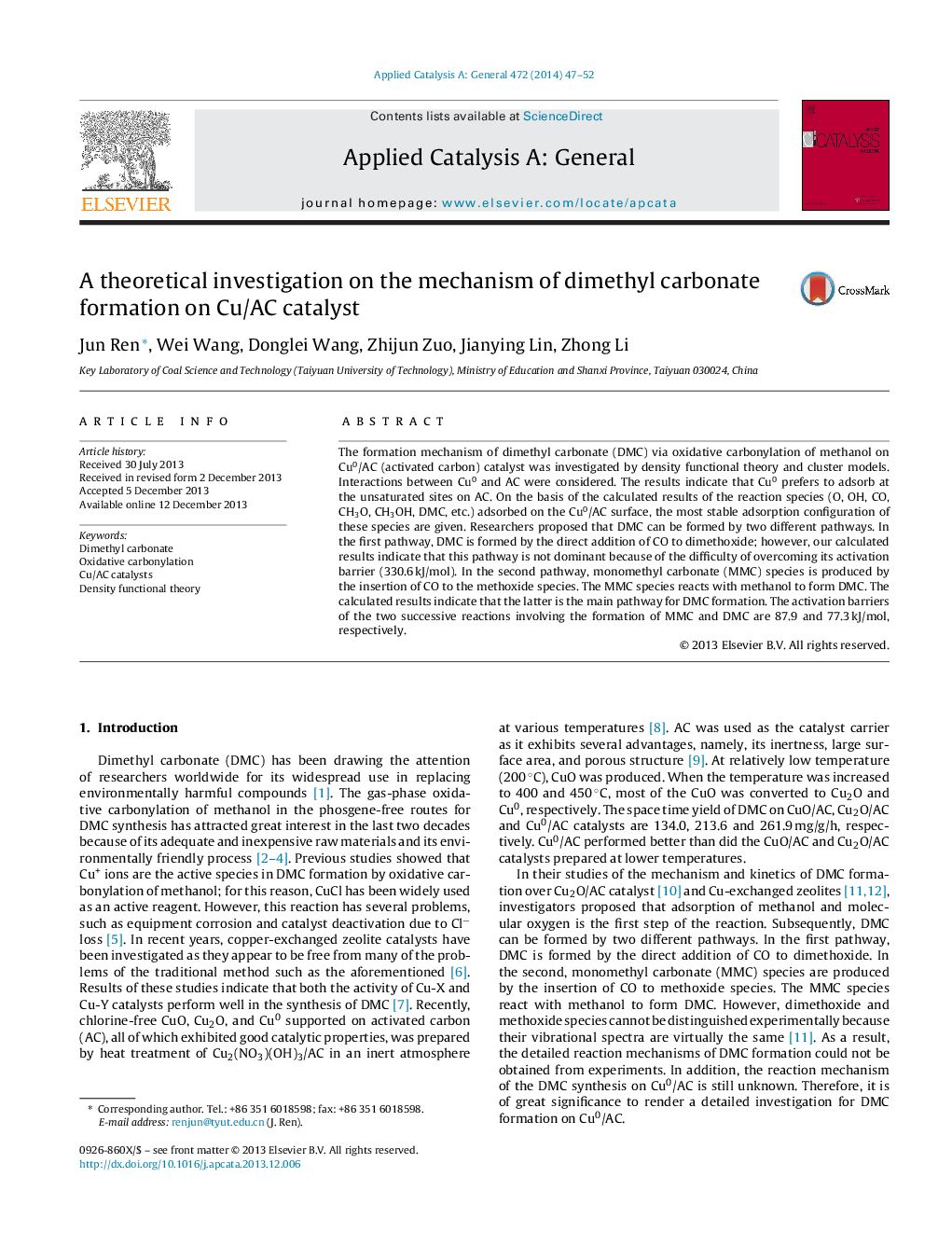| Article ID | Journal | Published Year | Pages | File Type |
|---|---|---|---|---|
| 39788 | Applied Catalysis A: General | 2014 | 6 Pages |
•The copper atoms are preferable to adsorb at the unsaturated sites on carbon.•The pathway involves insertion of CO to dimethoxide species is impossible.•The main reaction pathway for DMC formation on Cu/AC Catalyst is given.
The formation mechanism of dimethyl carbonate (DMC) via oxidative carbonylation of methanol on Cu0/AC (activated carbon) catalyst was investigated by density functional theory and cluster models. Interactions between Cu0 and AC were considered. The results indicate that Cu0 prefers to adsorb at the unsaturated sites on AC. On the basis of the calculated results of the reaction species (O, OH, CO, CH3O, CH3OH, DMC, etc.) adsorbed on the Cu0/AC surface, the most stable adsorption configuration of these species are given. Researchers proposed that DMC can be formed by two different pathways. In the first pathway, DMC is formed by the direct addition of CO to dimethoxide; however, our calculated results indicate that this pathway is not dominant because of the difficulty of overcoming its activation barrier (330.6 kJ/mol). In the second pathway, monomethyl carbonate (MMC) species is produced by the insertion of CO to the methoxide species. The MMC species reacts with methanol to form DMC. The calculated results indicate that the latter is the main pathway for DMC formation. The activation barriers of the two successive reactions involving the formation of MMC and DMC are 87.9 and 77.3 kJ/mol, respectively.
Graphical abstractFigure optionsDownload full-size imageDownload high-quality image (111 K)Download as PowerPoint slide
